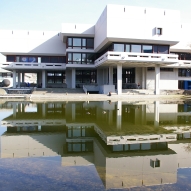Alternative Links zum Volltext:DOI
| Dokumentenart: | Artikel | ||||
|---|---|---|---|---|---|
| Titel eines Journals oder einer Zeitschrift: | J Comput Aided Mol Des : Journal of computer aided molecular design | ||||
| Verlag: | Springer/ESCOM | ||||
| Band: | 21 | ||||
| Seitenbereich: | S. 499-509 | ||||
| Datum: | 2007 | ||||
| Institutionen: | Chemie und Pharmazie > Institut für Pharmazie > Lehrstuhl Pharmazeutische / Medizinische Chemie II (Prof. Buschauer) | ||||
| Identifikationsnummer: |
| ||||
| Dewey-Dezimal-Klassifikation: | 500 Naturwissenschaften und Mathematik > 500 Naturwissenschaften | ||||
| Status: | Veröffentlicht | ||||
| Begutachtet: | Ja, diese Version wurde begutachtet | ||||
| An der Universität Regensburg entstanden: | Ja | ||||
| Dokumenten-ID: | 29032 |
Metadaten zuletzt geändert: 29 Sep 2021 07:39
Nur für Besitzer und Autoren: Kontrollseite des Eintrags



 Altmetric
Altmetric Altmetric
Altmetric